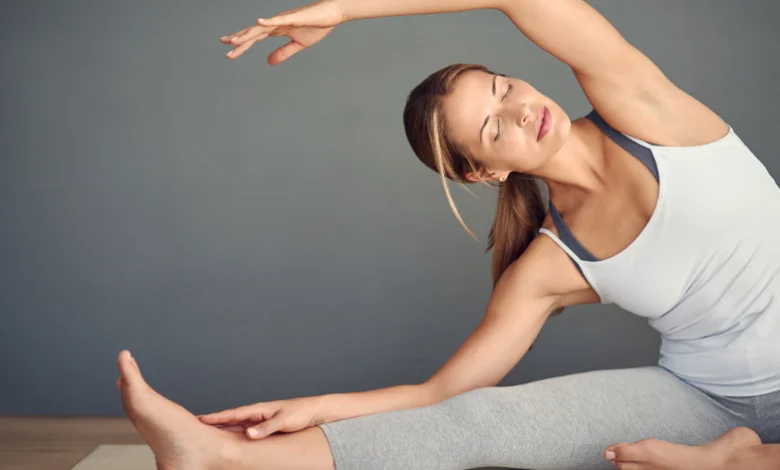Visualization is a dynamic and powerful tool that can elevate your meditation practice to new heights. By integrating vivid mental imagery into your sessions, you can enhance focus, reduce stress, and achieve a deeper connection with your inner self. In this article, we’ll explore how the power of visualization can transform your meditation practice and how SmartFitYoga can guide you on this journey.
What is Visualization in Meditation?
Visualization in meditation involves creating mental images or scenes to guide your focus and intention. It’s more than just imagining random pictures; it’s about deliberately crafting mental scenarios that resonate with your goals, emotions, or desires. Whether you’re visualizing a serene landscape, a bright light, or a personal achievement, this technique can help deepen your meditation practice by keeping your mind engaged and centered.
Benefits of Visualization in Meditation
Visualization can enhance your meditation practice in numerous ways. Here are some key benefits:
1. Deepens Concentration
Visualization provides a focal point for your mind, helping you maintain concentration during meditation. By focusing on a specific image or scenario, you can prevent your mind from wandering, allowing for a deeper and more effective meditation session.
2. Reduces Stress and Anxiety
Imagining calming scenes, like a tranquil beach or a peaceful forest, can activate your body’s relaxation response. This helps reduce stress and anxiety, leaving you feeling more relaxed and centered after your meditation.
3. Enhances Emotional Well-being
Visualization can evoke positive emotions and help you connect with feelings of joy, love, or gratitude. By mentally experiencing these emotions during meditation, you can enhance your overall emotional well-being and carry these positive vibes into your daily life.
4. Supports Goal Setting and Achievement
Visualization is a powerful tool for manifesting your goals. By imagining yourself achieving your aspirations, you create a mental blueprint that can motivate you to take action and make those goals a reality.
5. Promotes Healing
Many people use visualization to promote physical healing by imagining the body repairing itself or visualizing energy flowing to areas that need healing. This practice can support overall wellness and recovery.
How to Practice Visualization in Meditation
Ready to incorporate visualization into your meditation practice? Follow these steps:
Step 1: Find a Quiet Space
Choose a peaceful environment where you can meditate without interruptions. Make sure the space is comfortable, whether you’re sitting on a cushion, a chair, or lying down.
Step 2: Set Your Intention
Before you begin, decide what you want to achieve with your visualization. Whether it’s stress relief, emotional healing, or goal setting, having a clear intention will guide your practice.
Step 3: Focus on Your Breathing
Start by taking deep, slow breaths to calm your mind and body. As you breathe in, imagine filling your body with positive energy. As you breathe out, release any tension or negative thoughts.
Step 4: Begin Your Visualization
Close your eyes and start to visualize your chosen image or scene. Engage all your senses to make the visualization as vivid as possible. Imagine the colors, sounds, smells, and feelings associated with your scene. For example, if you’re visualizing a beach, picture the waves gently crashing, the sun warming your skin, and the sound of seagulls in the distance.
Step 5: Maintain Focus
As you continue your meditation, keep your focus on the visualization. If your mind begins to wander, gently bring your attention back to the image. The more you practice, the easier it will become to maintain this focus.
Step 6: End with Gratitude
Conclude your meditation by expressing gratitude for the experience. Take a moment to reflect on the positive emotions and clarity you’ve gained, and carry this sense of gratitude with you throughout your day.
Tips for Effective Visualization
Here are some tips to help you get the most out of your visualization practice:
- Start Simple: If you’re new to visualization, begin with simple images that are easy to picture. As you become more comfortable, you can explore more complex visualizations.
- Be Patient: Visualization is a skill that improves with practice. Don’t get discouraged if it feels challenging at first.
- Use Guided Meditations: If you find it difficult to visualize on your own, try using guided meditations. SmartFitYoga offers a variety of sessions specifically designed to enhance visualization.
- Practice Regularly: Consistency is key. Try to incorporate visualization into your daily meditation routine, even if it’s just for a few minutes.
How SmartFitYoga Can Enhance Your Visualization Practice
SmartFitYoga provides a range of resources to support your meditation and visualization journey. Whether you’re a beginner or an experienced meditator, SmartFitYoga offers guided meditations that can help you harness the power of visualization. With sessions focused on relaxation, stress relief, personal growth, and more, you’ll find the tools you need to deepen your practice and achieve your goals.
Conclusion
Visualization is a powerful technique that can significantly enhance your meditation practice. By creating vivid mental images, you can deepen your focus, reduce stress, and promote emotional well-being. With the support of platforms like SmartFitYoga, you can integrate visualization into your daily routine, unlocking new levels of peace, clarity, and personal growth.
FAQs
1. What is visualization in meditation?
Visualization in meditation is the practice of creating mental images or scenarios to guide your focus and enhance your meditation experience.
2. How does visualization help reduce stress?
Visualization can reduce stress by creating calming mental images that trigger the body’s relaxation response, promoting a sense of peace and well-being.
3. Can beginners practice visualization in meditation?
Yes, visualization is suitable for beginners. Starting with simple images can help you develop this skill over time.
4. How can SmartFitYoga help with visualization in meditation?
SmartFitYoga offers guided meditations that incorporate visualization techniques, providing expert guidance and resources to help you deepen your practice.
5. How often should I practice visualization in meditation?
For best results, try to practice visualization daily. Regular practice will help you to master the technique and experience its full benefits.

